
Menu
Menu
The unique segmental disc is designed to maximise collection and release of air, whilst generating horizontal velocity.
aerdisc® is designed to optimise conversion of mechanical energy into kinetic energy. It does not waste energy throwing water in the air.
The operating principle involves a continuous cycle of capturing atmospheric gases and dissolving oxygen as the partially immersed disc rotates.
The unique segmental disc is designed to maximise collection and release of air, whilst generating horizontal velocity.
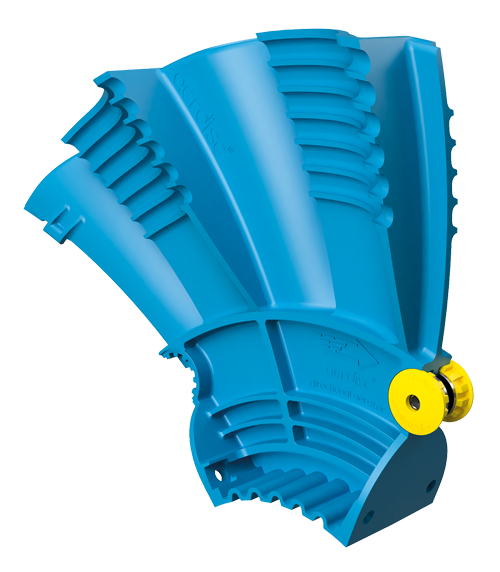
aerdisc® is designed to optimise conversion of mechanical energy into kinetic energy. It does not waste energy throwing water in the air.
The operating principle involves a continuous cycle of capturing atmospheric gases and dissolving oxygen as the partially immersed disc rotates.
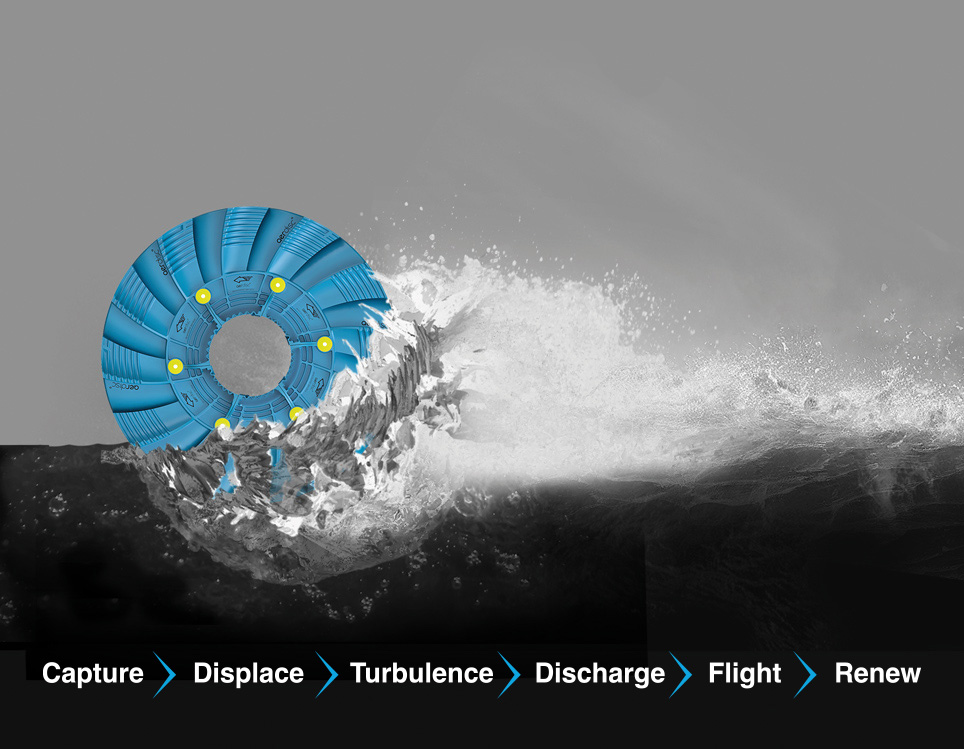
aerdisc® sets new standards of oxygen transfer efficiency; has no capacity to harvest rag, nor scour the floor of earthen lagoons, and is purpose-designed to prevent short-circuiting.
aerdisc® sets new standards of oxygen transfer efficiency; has no capacity to harvest rag, nor scour the floor of earthen lagoons, and is purpose-designed to prevent short-circuiting.
The bollard allows the aerator to swivel to suit the required vector of thrust, and rise and fall in accordance with water level variation.
The pontoon features a lateral spar to achieve an open discharge. The spar allows each float to move independently, whilst remaining parallel.
SEW-Eurodrive, helical gearmotor with hollow-shaft torque arm mounting. No belts, pulleys, chains, sprockets, or couplings.
Cast stainless steel, split bearing housing with double-row spherical roller bearing. The housing doubles as a torque arm mount for the drive.
Unique triple-rotor/double-stator, spherical labyrinth seal provides a tortuous path to prevent contamination reaching the bearing.
As the name suggests, directional aeration directs the discharge in a chosen direction, for a particular purpose. The most common purpose is generation of a specific flow pattern to prevent short-circuiting. This is the term given to flow taking the most direct path between the inlet and outlet. This reduces the HRT (Hydraulic Retention Time) and therefore limits the process potential of any flow-through lagoon.
However, the core logic is less obvious.
Directional aeration focuses on mass displacement of water and rapid renewal of the contact area. Water with a low DO (Dissolved Oxygen) level is drawn in, charged with oxygen, and moved on.
This is critical because the highest rate of oxygen solubility occurs when oxygen deficit is greatest.
Oxygen deficit is the difference between actual oxygen content and the saturation value of the water. The greater the difference the greater the oxygen deficit.
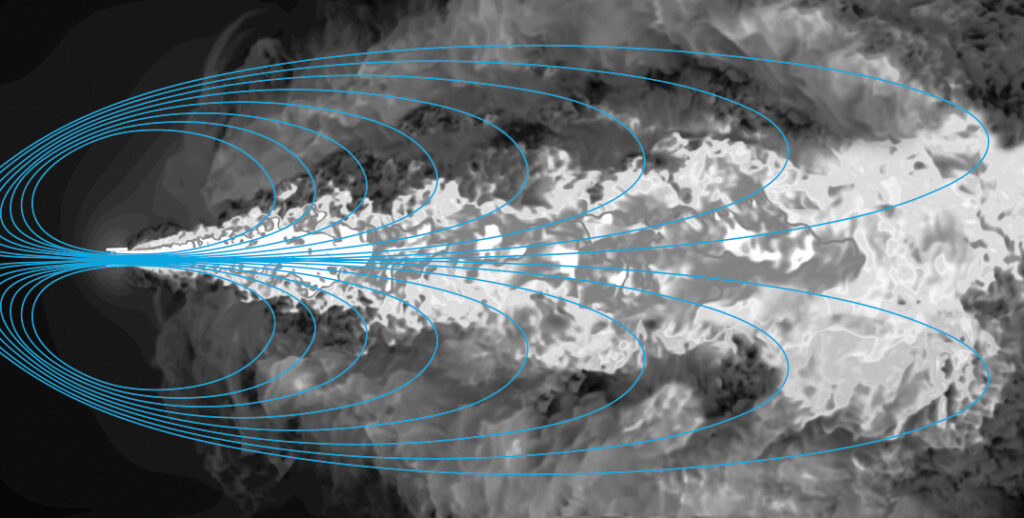
This image shows a 7.5kW aerdisc® operating in a 200 x 100 x 1.5m lagoon. This clearly illustrates the Velocity-Contours and flow recirculation.
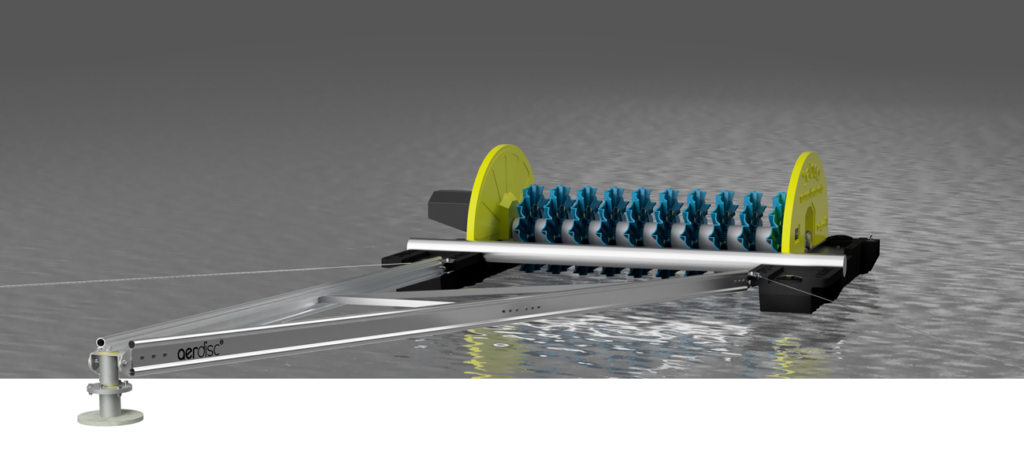
aerdisc® features a 9m extruded aluminium, A-frame swing-arm attached to a fully articulated mooring bollard and two stability cable anchors. The swing-arm doubles as a power cable conduit.
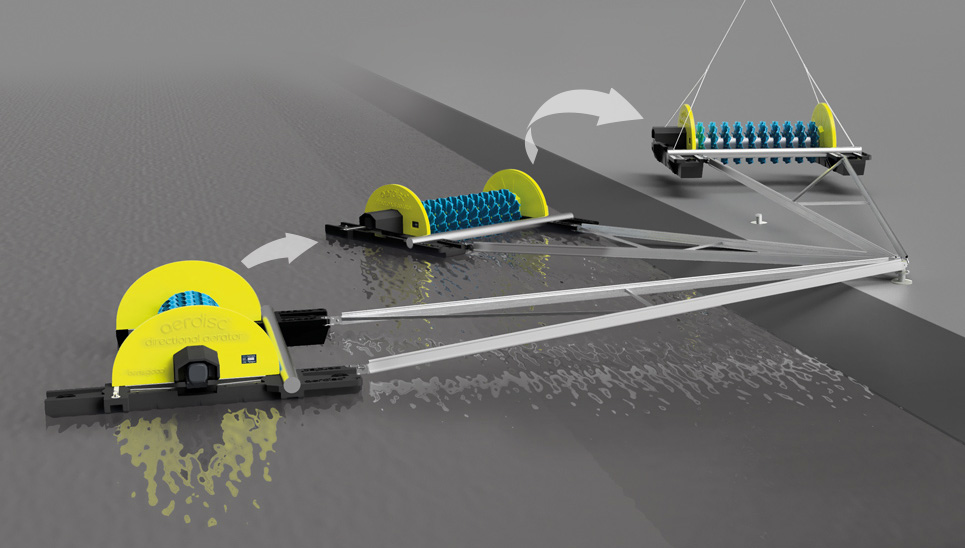
aerdisc® is designed to allow it to swivel to the berm for inspection, housekeeping or crane connection by releasing the stability cables. Upon connection to the integral lifting bridle, it can be removed from the water and placed on the berm for maintenance. Lifting does not require swing-arm nor electrical disconnection.
The swing-arm can be attached using any one of three configurations to suit the required vector of thrust. Adjustments to the vector of thrust are controlled by using the two stability cables. The configuration can be changed at any time.
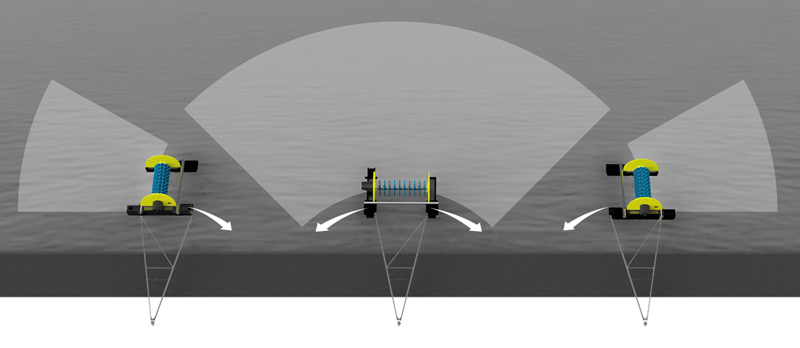
The swing-arm can be attached using any one of three configurations to suit the required vector of thrust. Adjustments to the vector of thrust are controlled by using the two stability cables. The configuration can be changed at any time.
LEFT HAND CONFIGURATIONS
Vector of thrust range 0° to +30°
INLINE CONFIGURATION
Vector of thrust range ±45°
RIGHT HAND CONFIGURATION
Vector of thrust range 0° to -30°

